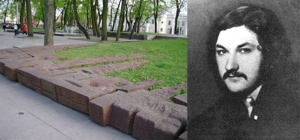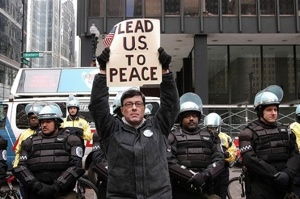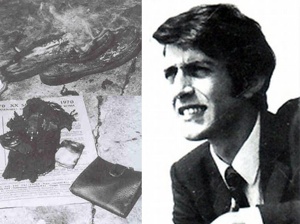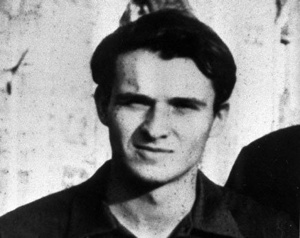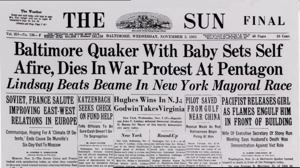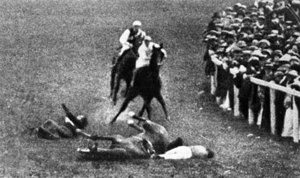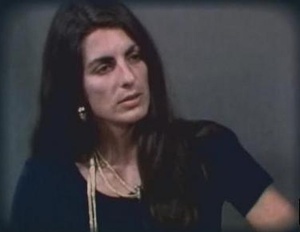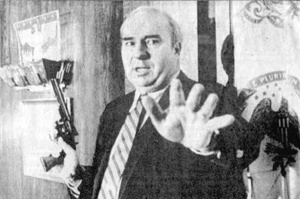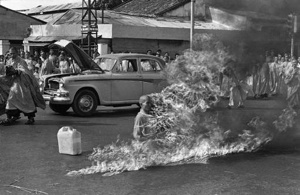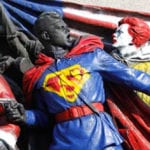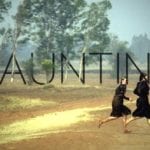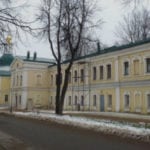 Technology
Technology  Technology
Technology  Humans
Humans 10 Everyday Human Behaviors That Are Actually Survival Instincts
 Animals
Animals 10 Animals That Humiliated and Harmed Historical Leaders
 History
History 10 Most Influential Protests in Modern History
 Creepy
Creepy 10 More Representations of Death from Myth, Legend, and Folktale
 Technology
Technology 10 Scientific Breakthroughs of 2025 That’ll Change Everything
 Our World
Our World 10 Ways Icelandic Culture Makes Other Countries Look Boring
 Misconceptions
Misconceptions 10 Common Misconceptions About the Victorian Era
 Mysteries
Mysteries 10 Strange Unexplained Mysteries of 2025
 Miscellaneous
Miscellaneous 10 of History’s Most Bell-Ringing Finishing Moves
 Technology
Technology Top 10 Everyday Tech Buzzwords That Hide a Darker Past
 Humans
Humans 10 Everyday Human Behaviors That Are Actually Survival Instincts
 Animals
Animals 10 Animals That Humiliated and Harmed Historical Leaders
Who's Behind Listverse?

Jamie Frater
Head Editor
Jamie founded Listverse due to an insatiable desire to share fascinating, obscure, and bizarre facts. He has been a guest speaker on numerous national radio and television stations and is a five time published author.
More About Us History
History 10 Most Influential Protests in Modern History
 Creepy
Creepy 10 More Representations of Death from Myth, Legend, and Folktale
 Technology
Technology 10 Scientific Breakthroughs of 2025 That’ll Change Everything
 Our World
Our World 10 Ways Icelandic Culture Makes Other Countries Look Boring
 Misconceptions
Misconceptions 10 Common Misconceptions About the Victorian Era
 Mysteries
Mysteries 10 Strange Unexplained Mysteries of 2025
 Miscellaneous
Miscellaneous 10 of History’s Most Bell-Ringing Finishing Moves
Top 10 People Who Committed Suicide In Public
Christmas Competition: 2nd Place. Congratulations to Samehrocks for this great (albeit macabre) list – he has won the second prize of a 1GB Apple iPod shuffle valued at $79!
10. Romas Kalanta
Romas Kalanta (February 22, 1953 – May 14, 1972) is considered a national hero of Lithuania, and is the subject of several books. Romas Kalanta set himself on fire in a public place in the Lithuanian city of Kaunas on May 14, 1972, in protest of the oppression of the Lithuanian language, culture and people by the government of the Soviet Union. At the time it was very difficult to tell the western world about this oppression, as the Soviet government made foreign communications nearly impossible.
Up until the time of this event, foreigners were only able to see the “bright” side of the Lithuanian situation—the side that the government wanted them to see. Kalanta’s suicide was seen by many people, including journalists who visited the Soviet Union. The Soviet government tried to cover up the event, but its story spread as legend by word of mouth. This caused student unrest in Lithuania, especially in Kaunas.
Kalanta used fuel to set himself alight. Due to the need for secrecy at the time, details of the event are disputed. The common belief is that he and a few of his classmates formed a patriot group, and that they held a lottery to determine which of them would have to carry out the mission.
9. Malachi Ritscher
Malachi Ritscher (Mark David Ritscher; January 13, 1954 – November 3, 2006) was a musician, recording engineer, and anti-war protester.
Ritscher came into the national spotlight after committing self-immolation on the side of the Kennedy Expressway near downtown Chicago during the morning rush hour of Friday November 3, 2006, as a protest against the Iraq war. In a suicide letter published on his website, he described at length his political convictions as to the Iraq War and his choice to take his own life, suggesting at one point, “if I am required to pay for your barbaric war, I choose not to live in your world.”
Ritscher’s suicide is one of only nine reported incidents of self-immolation performed as an act of protest in American history.
8. Kostas Georgakis
Georgakis was a Greek student at the University of Genoa and a member of the Center Union party, since 1968. In July 1970, he anonymously released an interview to a newspaper, in which he revealed the military junta’s intelligence infiltration of the Greek students’ movements in Italy. Georgakis’ identity was rapidly discovered and, fearing for his family in Greece, he decided that he had to make an act to raise awareness of Western public opinion on the condition of his country. In the early hours of 19 September, 1970, Georgakis set himself ablaze in Matteotti square, in Genoa, to protest against the dictatorial regime of Georgios Papadopoulos.
7. Jan Palach
The Soviet-led invasion of Czechoslovakia in August 1968, was designed to crush the liberalising reforms of Alexander Dub?ek’s government during the Prague Spring. Palach died after setting himself on fire in Wenceslas Square in Prague, Czechoslovakia, on 16 January, 1969, in protest.
The funeral of Palach turned into a major protest against the occupation, and a month later (on February 25, 1969) another student, Jan Zajíc, burned himself to death in the same place, followed in April of the same year by Evžen Plocek in Jihlava.
6. Norman Morrison
Norman Morrison (December 29, 1933 – November 2, 1965), born in Erie, Pennsylvania, was a Baltimore Quaker best known for committing suicide at age 31 in an act of self-immolation to protest United States involvement in the Vietnam War.
On November 2, 1965, Morrison doused himself in kerosene and set himself on fire below Secretary of Defense Robert McNamara’s Pentagon office. Morrison took his daughter, Emily, then one year old, to the Pentagon, and either set her down or handed her off to someone in the crowd before setting himself ablaze. Morrison’s reasons for taking Emily and then sparing her are not entirely known.
5. Ryszard Siwiec
Ryszard Siwiec (1909—September 12, 1968) was a Polish accountant, teacher and former Home Army soldier who was the first person to set himself on fire in protest against the Soviet-led invasion of Czechoslovakia. He set himself ablaze in Warsaw during a national harvest festival on September 8, 1968, at the Dziesi?ciolecia Stadium, and died in hospital four days later. His act was witnessed by nearly 100,000 spectators, including the national leadership and foreign diplomats who had been invited to the festival, intended as a vast propaganda spectacle. A father of five from Przemy?l, Siwiec planned his self-immolation in advance, leaving written and tape-recorded statements explaining his revulsion at both the Warsaw Pact invasion and communist Poland’s participation in it. His death foreshadowed the famous self-immolation of Jan Palach in Prague four months later. It has not been revealed that Palach knew about Siwiec’s act of protest, as the Polish communist authorities vigorously suppressed any information about it, stating only that Siwiec was “suffering from mental illness”. Although his act was captured by a motion picture camera, newsreels of the festival omitted any mention of the incident. Although a number of Czechs attended the festival, Siwiec’s death became widely known in Czechoslovakia only after the news of it was broadcast on Radio Free Europe, two months after Palach’s death.
4. Emily Wilding Davison
Emily Wilding Davison (1872 – June 8, 1913) was an activist for women’s suffrage in the United Kingdom. It is thought that she committed suicide by throwing herself under King George V’s horse at the Epsom Derby.
Davison was born in Blackheath, London, and had a university education, having studied first at Royal Holloway College in London. She later studied English Language and Literature at St Hugh’s College, Oxford, and obtained first-class honours in her final exams, though women were not, at that time, admitted to degrees at Oxford. She joined the Women’s Social and Political Union (WSPU) in 1906, and immediately involved herself in their more militant activities. She was arrested and imprisoned for various offences, including a violent attack on a man she mistook for the Chancellor of the Exchequer, David Lloyd George. She went on hunger strike and was force-fed in Holloway prison, where she threw herself down an iron staircase as a protest. She landed on wire netting 30 feet below, which saved her, however she suffered some severe spinal damage.
On July 13, the night of the 1911 census, Davison hid in a cupboard in the Palace of Westminster overnight so that on the census form she could legitimately give her place of residence that night as the “House of Commons”. Tony Benn, MP, once unofficially placed a plaque there to commemorate the event.
Davison’s purpose in attending the Derby of June 4, 1913, is unclear. Much has been made of the fact that she purchased a return rail ticket, suggesting that suicide was not, on this occasion, her initial intention. Film of the incident shows her stepping out in front of the horse, Anmer, as it rounded Tattenham Corner, with Davison carrying the banner of the WSPU. But instead of stopping, Anmer trampled her, knocking her unconscious. Eyewitnesses at the time were divided as to her motivation, with many believing that she had simply intended to cross the track, believing that all horses had passed; while others reported that she had attempted to pull down the King’s horse. She died 4 days later in Epsom Cottage Hospital, due to a fractured skull caused by the incident. Herbert Jones, the jockey who was riding the horse, suffered a mild concussion in the incident, the horse survived but with bruised shins.
Davison is buried in the church yard of St. Mary the Virgin, Morpeth, Northumberland. The funeral attracted a large crowd. Her gravestone bears the WSPU slogan, “Deeds not words”. She had two funerals, one in London and one in her home town.
3. Christine Chubbuck
On the morning of July 15, 1974, Chubbuck confused co-workers by claiming that she had to read a newscast to open her program, Suncoast Digest, something she had never done before. That morning’s talk show guest waited across the studio while she sat at the news anchor’s desk. Her news copy actually contained a speculative report of her impending suicide, wherein she conjectured she would be declared dead eleven hours later. She placed a .38 revolver in her bag of puppets and put it beneath her desk.
During the first eight minutes of her program, Chubbuck covered three national news stories and then a local restaurant shooting from the day before. The restaurant was the Beef and Bottle Restaurant at the Sarasota-Bradenton Airport on U.S. 41. The film reel of the restaurant shooting had jammed and wouldn’t run, so Christine shrugged it off and said:
“In keeping with Channel 40’s policy of bringing you the latest in blood and guts, and in living color, you are going to see another first: an attempted suicide.”
She drew out the revolver and shot herself behind her right ear. Christine fell forward violently and the technical director faded slowly to black. Camerawoman Jean Reed later recalled that she thought it had been an elaborate prank, and it wasn’t until she saw Chubbuck’s twitching body that she realized it was genuine.
The station quickly ran a standard Public Service tape, and then a movie. Some television viewers had phoned 9-1-1, while others phoned the station to inquire if the shooting was faked.
Chubbuck was taken to Sarasota Memorial Hospital and was pronounced dead 14 hours later. Upon receiving the news, a WXLT staffer released the information to other stations using Chubbuck’s copy, as she left it for just that purpose.
2. Budd Dwyer
On January 22, 1987, the day before his sentencing, Dwyer called a press conference to “provide an update on the situation.” Many expected Dwyer to announce his resignation from office. At the conference, an agitated and nervous Dwyer once again professed his innocence, and declared that he would not resign as state treasurer. Those attending would hear his final words:
“I face a maximum sentence of 55 years in prison and a $300,000 fine for being innocent. Judge Muir has already told the press that he, “felt invigorated” when we were found guilty, and that he plans to imprison me as a deterrent to other public officials. But it wouldn’t be a deterrent because every public official who knows me knows that I am innocent; it wouldn’t be a legitimate punishment because I’ve done nothing wrong.” Then he proceeded “The guilty verdict has strengthened that resolve. But as we’ve discussed our plans to expose the warts of our legal system, people have said: “Why bother?” “No one cares.” “You’ll look foolish.” “60 Minutes, 20/20, the American Civil Liberties Union, Jack Anderson and others have been publicizing cases like yours for years, and it doesn’t bother anyone.”
At this point, Dwyer stopped with his prepared text and called to three of his staffers, giving each an envelope. It was later discovered that one contained a suicide note to his wife. The second was an organ donor card and other related materials. The third was a letter to the newly-inaugurated governor, Robert P. Casey.
After handing out the envelopes, Dwyer opened a manila envelope and withdrew a .357 Magnum revolver, advising those in the crowd, “Please leave the room if this will offend you.” Those in attendance cried out to Dwyer, pleading with him to put the gun down (“Budd, don’t!” was heard on television.) Some tried to approach him. “Stay away, this thing will hurt someone,” he warned. Amid the cry of “Budd, Budd, Budd!” Dwyer put the gun barrel into his mouth and pulled the trigger. He collapsed against a wall in a sitting position, blood pouring from his nose, all in front of five television news cameras. Dwyer was declared dead at the scene at 11:31 a.m. CDT.
1. Thich Quang Duc
On June 11th, 1963, Thích Qu?ng ??c, a Vietnamese Buddhist monk, sat down in the middle of a busy intersection in Saigon, covered himself in gasoline, ignited a match and set himself on fire. ??c burned to death in a matter of minutes, and he was immortalized in a famous photograph taken by a reporter who was in Vietnam to photograph the war. All those who saw this spectacle were taken by the fact that Duc did not make a sound while burning to death. ??c was protesting President Ngô ?ình Di?m’s administration for oppressing the Buddhist religion.
